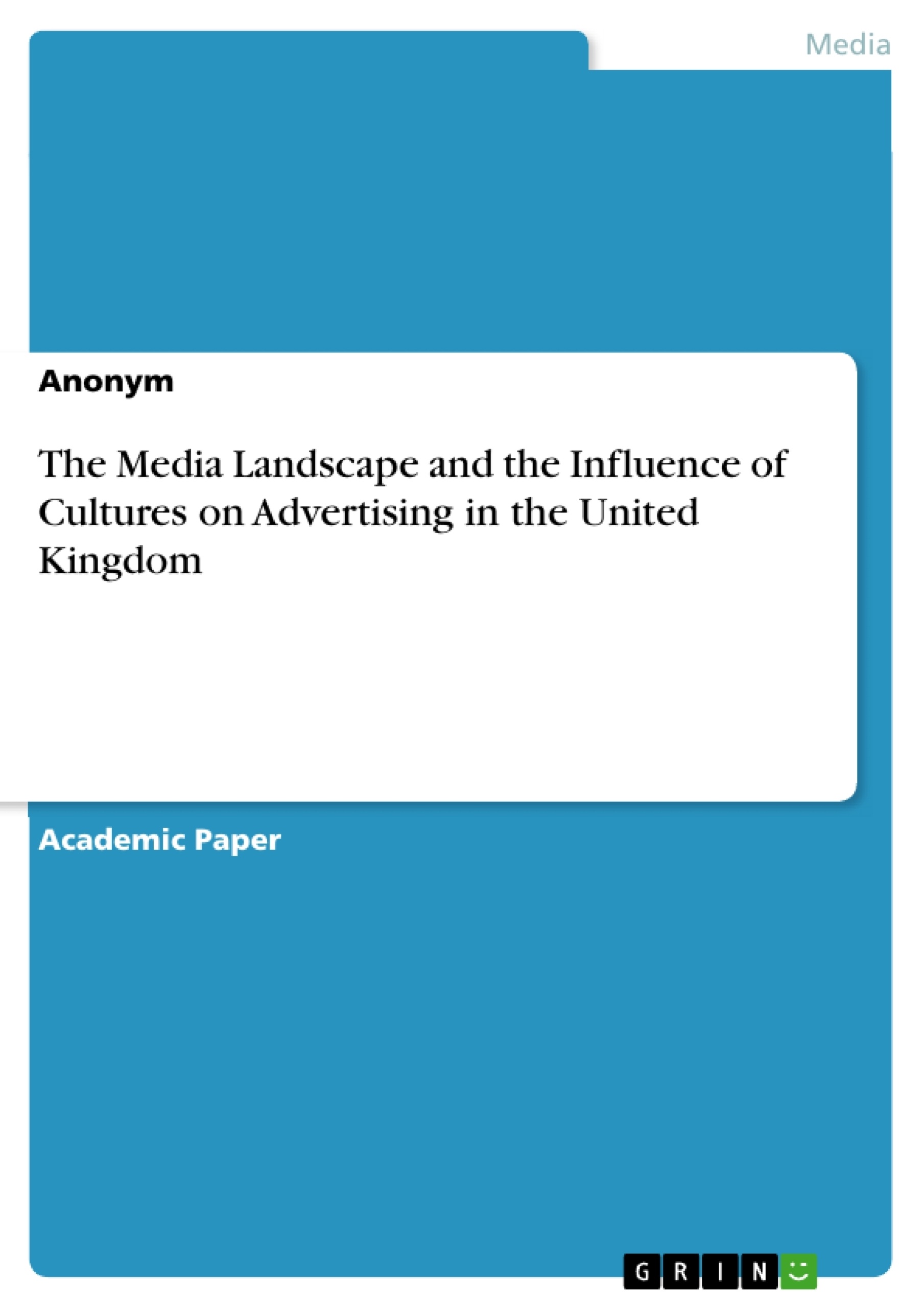This work includes an in-depth analysis of the United Kingdom market in terms of its media usage of all kinds. Furthermore, the Hofstede Cultural Model is used for a closer look at the way advertising is used in order to better understand what kind of advertising is most effective in the UK. In the last part, several TV commercials of the last years are analyzed to strengthen this analysis.
Inhaltsverzeichnis (Table of Contents)
- Introduction
- Media Survey in the United Kingdom
- Population
- GDP in the United Kingdom
- Households in the United Kingdom
- United Kingdom Media Usage Internet
- United Kingdom Media Usage TV
- United Kingdom Media Usage Radio
- United Kingdom Media Usage Newspaper
- United Kingdom Media usage Social Media
- Hofstede's culture model
- The United Kingdom in Hofstede's culture Model
- United Kingdom - Power Distance
- United Kingdom - Individualism
- United Kingdom - Masculinity
- United Kingdom - Uncertainty Avoidance
- United Kingdom - Long Term Orientation
- United Kingdom - Indulgence
- United Kingdom –Summary
- Hofstede's findings in advertisement
- The United Kingdom in Hofstede's culture Model
- Media Analysis
- If London were Syria
- Santander
- Sexy Delights of Europe
- On your Child's Life
- Co-op Easter egg advert
- Dave's Epic Strut / Bootylicious
- Jaguar - A Breed Apart
- Conclusion
Zielsetzung und Themenschwerpunkte (Objectives and Key Themes)
This paper aims to examine the current media landscape in the United Kingdom and analyze the influence of technological advancements on media use by the population. It explores the diversity of the UK media landscape, taking into account cultural influences and the impact of globalization. Key themes include:- The evolving media landscape in the United Kingdom
- The impact of technology on media usage patterns
- Cultural influences on advertising and media consumption
- Hofstede's cultural dimensions and their application to marketing
- Analysis of specific advertising campaigns in the UK
Zusammenfassung der Kapitel (Chapter Summaries)
The introductory chapter provides a general overview of international marketing and its significance in the context of globalization. It highlights the increasing importance of understanding cultural differences in international trade and emphasizes the role of the United Kingdom as a diverse and dynamic market. Chapter 2 delves into the media landscape of the United Kingdom, examining various media consumption patterns. This section explores the population demographics, economic indicators, and media usage statistics across different platforms, including internet, television, radio, newspapers, and social media. Chapter 3 introduces Hofstede's cultural model, a framework for understanding cultural differences. It analyzes the United Kingdom's position on each of Hofstede's six dimensions - power distance, individualism, masculinity, uncertainty avoidance, long-term orientation, and indulgence - and discusses how these dimensions influence advertising strategies. Chapter 4 presents a critical analysis of specific advertising campaigns in the United Kingdom. These case studies offer insights into the ways in which cultural nuances and technological advancements are reflected in advertising.Schlüsselwörter (Keywords)
International Marketing, Media Landscape, United Kingdom, Cultural Influence, Advertising, Hofstede's Cultural Dimensions, Media Usage, Globalization, Technology, Case Studies, Marketing Strategy.
Excerpt out of 47 pages
- scroll top
- Quote paper
- Anonym (Author), 2019, The Media Landscape and the Influence of Cultures on Advertising in the United Kingdom, Munich, GRIN Verlag, https://www.grin.com/document/1150624
Look inside the ebook



